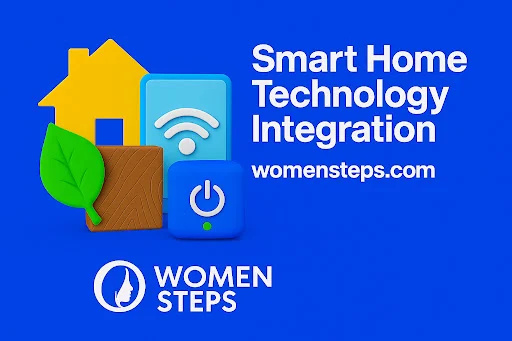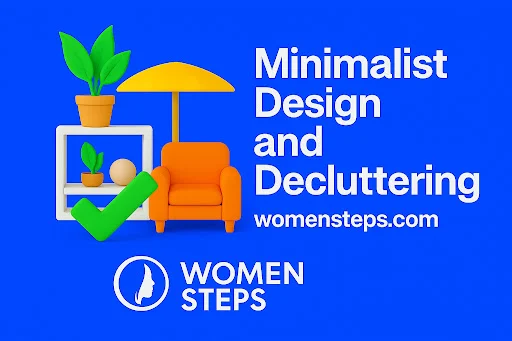Transform Your Space: Top 10 USA Home Improvement Trends for 2025
As we step into 2025, the world of home improvement is buzzing with innovative trends that promise to elevate your living spaces like never before. Whether you're a DIY enthusiast or looking to collaborate with professionals, the latest design inspirations call for creativity and functionality. From sustainable materials that reduce our carbon footprint to smart home technologies that enhance convenience, transforming your space has never been more exciting. Homeowners across the USA are embracing open layouts, biophilic designs that bring the outdoors in, and multifunctional areas that adapt to our evolving lifestyles. In this article, we unveil the top 10 home improvement trends that will redefine interiors in 2025, offering fresh ideas to rejuvenate your home. Join us as we explore these transformative concepts that not only enhance aesthetics but also create better living environments for you and your family. Your dream space is just a trend away!
Sustainable and Eco-Friendly Materials
As global awareness of environmental issues continues to rise, sustainable and eco-friendly materials are becoming an integral part of home improvement projects. In 2025, homeowners are increasingly turning to materials that not only look good but also minimize their carbon footprint. Reclaimed wood, recycled metal, and bamboo are just a few examples of materials that are both stylish and sustainable. These materials are not only durable but also bring a unique character to homes, making them a popular choice for eco-conscious renovators.
Incorporating sustainable materials into your home not only helps the environment but also adds a layer of authenticity and history to your living spaces. For instance, reclaimed wood can be used to create stunning flooring, feature walls, or custom furniture pieces, each with its own unique story. Additionally, recycled metal fixtures and fittings offer a modern industrial look while reducing the demand for newly mined resources. These choices reflect a growing trend towards sustainability and responsibility in design.
Furthermore, the use of eco-friendly materials often translates to improved indoor air quality and healthier living environments. Natural materials such as cork, linoleum, and clay-based paints are free from harmful chemicals and toxins, making them a safer option for families. By opting for sustainable materials, homeowners are not just making a style statement but also contributing to the well-being of their loved ones and the planet.
Smart Home Technology Integration
One of the most significant advantages of smart home technology is its ability to enhance energy efficiency. Smart thermostats, for example, learn your preferences and adjust heating and cooling systems accordingly, reducing energy consumption and lowering utility bills. Similarly, smart lighting systems can be programmed to turn off when rooms are unoccupied, further contributing to energy savings. These innovations not only make homes more comfortable but also align with the growing emphasis on sustainability.
In addition to energy efficiency, smart home technology also enhances security and peace of mind. Advanced security systems with motion sensors, cameras, and remote monitoring capabilities allow homeowners to keep an eye on their property from anywhere in the world. Voice-activated assistants like Amazon Alexa and Google Home add another layer of convenience, enabling hands-free control of various home functions. As technology continues to evolve, the possibilities for creating smarter, more efficient homes are endless.
Open Concept Living Spaces
An open concept design typically combines the kitchen, dining, and living areas into a single, cohesive space. This layout encourages natural light to flow freely throughout the home, creating a bright and airy atmosphere. It also allows for more seamless entertaining, as hosts and guests can interact without being confined to separate rooms. The result is a more inclusive and dynamic living space that fosters togetherness and communication.
Moreover, open concept living spaces offer greater flexibility in terms of furniture arrangement and interior design. Without the constraints of walls, homeowners can experiment with different layouts and create multifunctional areas that adapt to their needs. Whether it's a cozy reading nook, a home office, or a play area for children, the possibilities are endless. This versatility makes open concept designs a popular choice for families and individuals alike.
Outdoor Living Enhancements
One of the most popular outdoor living enhancements is the addition of an outdoor kitchen. Equipped with grills, refrigerators, sinks, and even pizza ovens, outdoor kitchens make it easy to cook and entertain al fresco. These spaces are perfect for family gatherings, barbecues, and summer parties, offering a unique dining experience that brings people together. With the right design and amenities, an outdoor kitchen can become the heart of your backyard.
In addition to outdoor kitchens, other enhancements such as fire pits, pergolas, and outdoor lighting can transform a simple backyard into a cozy retreat. Fire pits provide warmth and ambiance, making outdoor spaces usable even during cooler months. Pergolas and gazebos offer shade and structure, creating defined areas for relaxation and entertainment. Thoughtful lighting design can enhance the beauty and functionality of outdoor spaces, making them enjoyable both day and night.
Minimalist Design and Decluttering
Decluttering is a key component of minimalist design, and it involves getting rid of items that no longer serve a purpose or bring joy. By simplifying their belongings, homeowners can create more open and breathable spaces that feel both serene and functional. This process often leads to a greater appreciation for the items that remain, as each piece is chosen for its value and relevance. The result is a home that feels intentional and harmonious.
In addition to its aesthetic appeal, minimalist design also offers practical benefits. With fewer items to manage and maintain, homeowners can enjoy easier cleaning and organization. Minimalist spaces often feel larger and more open, enhancing the overall sense of well-being. This design approach encourages mindful consumption and sustainable living, making it a perfect fit for those looking to create a more balanced and meaningful home.
Biophilic Design: Bringing Nature Indoors
One of the key components of biophilic design is the use of natural materials such as wood, stone, and natural fibers. These materials add warmth and texture to interiors, creating a sense of grounding and tranquility. Additionally, the incorporation of plants and greenery can significantly improve indoor air quality and create a more vibrant and dynamic environment. Indoor gardens, living walls, and potted plants are all popular ways to introduce greenery into the home.
Natural light is another essential element of biophilic design. Maximizing natural light through large windows, skylights, and open layouts can enhance mood and productivity while reducing the need for artificial lighting. Views of nature, whether through windows or artwork, also play a crucial role in biophilic design. By creating spaces that feel connected to the natural world, homeowners can enjoy a greater sense of well-being and harmony in their daily lives.
Multi-Functional Spaces for Flexibility
One of the most common examples of multi-functional spaces is the home office. With the rise of remote work, many homeowners are transforming spare bedrooms, nooks, or even closets into dedicated workspaces. These areas are designed to be efficient and comfortable, with features such as built-in desks, ample storage, and ergonomic furniture. However, when not in use as an office, these spaces can easily be reconfigured for other activities, such as a guest room or hobby area.
Another example of multi-functional design is the use of flexible furniture and storage solutions. Convertible sofas, fold-out tables, and modular shelving units allow homeowners to adapt their spaces to different activities and needs. This approach is particularly useful in smaller homes or apartments, where maximizing every square foot is essential. By creating versatile and adaptable spaces, homeowners can enjoy greater functionality and ease in their daily lives.
Color Trends: Bold Choices for 2025
One of the standout color trends for 2025 is the use of jewel tones. These rich and luxurious colors, such as sapphire blue, ruby red, and emerald green, create a sense of opulence and sophistication. Jewel tones can be used in various ways, from accent walls and furniture to smaller decor items like cushions and artwork. Their versatility allows homeowners to experiment with different combinations and create unique and personalized spaces.
In addition to jewel tones, earthy and warm colors are also gaining popularity. Terracotta, mustard yellow, and burnt orange bring a sense of warmth and comfort to interiors, creating inviting and cozy environments. These colors work well with natural materials and textures, enhancing the overall aesthetic of the space. By incorporating bold and expressive colors, homeowners can create interiors that reflect their individuality and style.
Statement Ceilings: Elevating the Fifth Wall
Acoustic Comfort: Soundproofing and Audio Zoning
Wellness Retreats at Home: Spa-Inspired Bathrooms and Mindful Nooks
Next Steps for Engaging Your Audience
Once you’ve shared these trends, deepen engagement by showcasing before-and-after galleries, interviewing designers who specialize in ceilings or acoustics, and creating interactive quizzes that help readers discover which trend best fits their lifestyle.
Conclusion: Embracing Change in Home Design
As we look ahead to 2025, it's clear that home improvement trends are evolving to meet the needs and desires of modern homeowners. From sustainable materials and smart home technology to open layouts and biophilic design, these trends are transforming the way we live and interact with our spaces. By embracing these innovations, homeowners can create environments that are not only beautiful but also functional, sustainable, and connected to nature.
The trends for 2025 emphasize the importance of flexibility and adaptability in home design. Multi-functional spaces and minimalist approaches allow homeowners to make the most of their living areas, creating homes that can evolve with their needs. Bold color choices and outdoor living enhancements add personality and vibrancy, making spaces more enjoyable and dynamic. These trends reflect a growing desire for homes that are both practical and expressive.
Ultimately, the home improvement trends of 2025 offer exciting opportunities to transform your space and enhance your quality of life. Whether you're embarking on a major renovation or making small updates, these trends provide a wealth of inspiration and ideas. By staying informed and open to new possibilities, you can create a home that truly reflects your values and lifestyle, setting the stage for a brighter and more fulfilling future.













Comments
Post a Comment
Welcome To Women Steps.